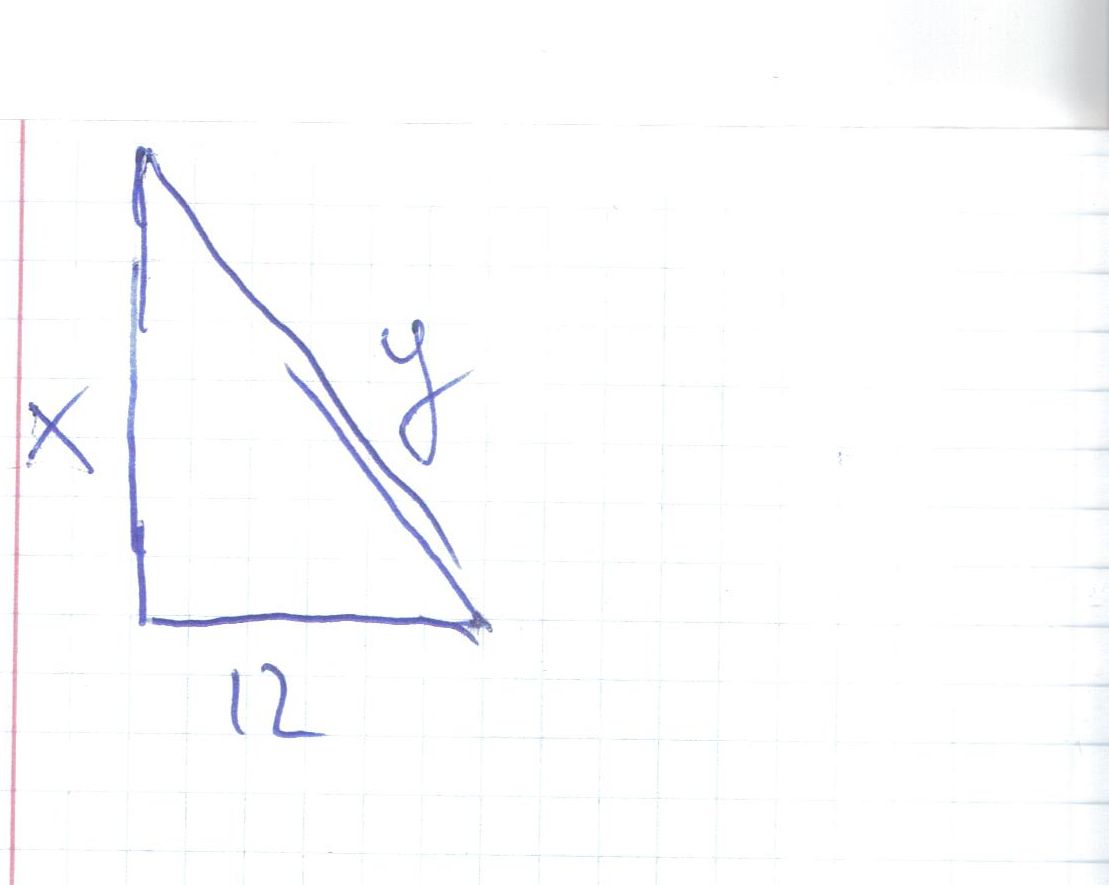Question #5b166
2 Answers
The perimeter is
Explanation:
Let the length of the hypotenuse be
And one side be
Then by The Pythagoras theorem, the third side is
The perimeter is
Deriving with respect to
The critical points max. or min) are when
Therefore,
The max. perimeter is
graph{x+12+sqrt(144-x^2) [-28.8, 53.4, -1.12, 40.03]}
The perimeter can be of any value (up to infinity). See explanation
Explanation:
The question is not precise enough and the answer is: The perimeter can be any number up to infinity.
.
As you see in the picture the lengths of side

